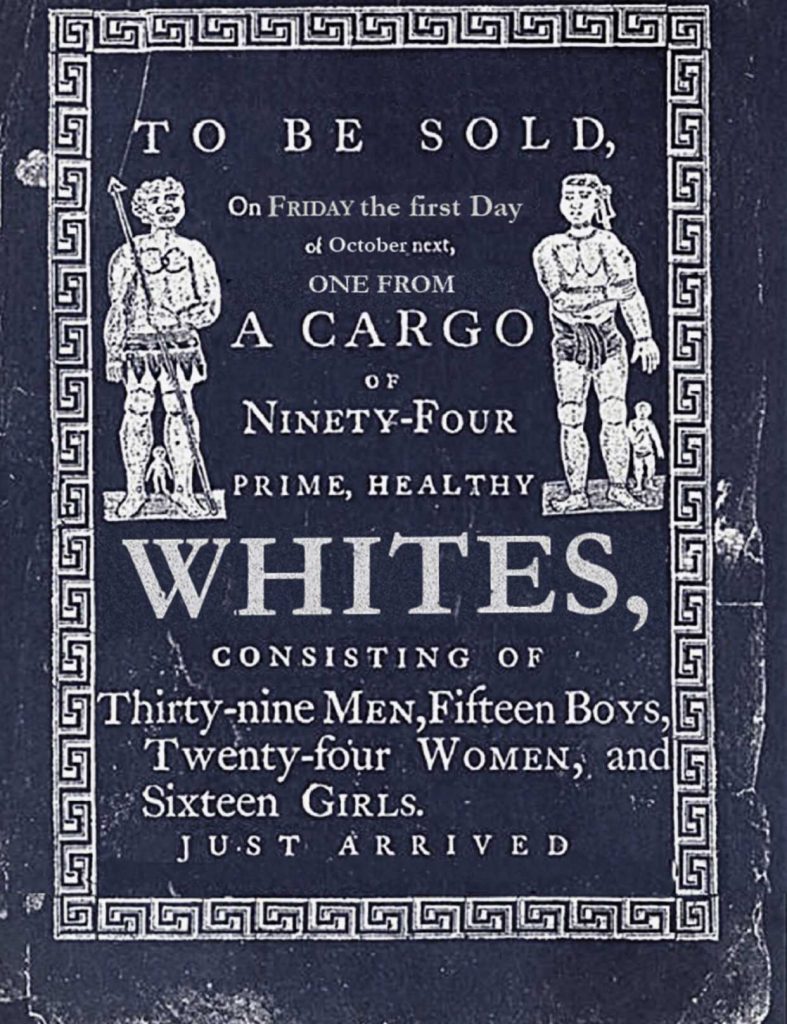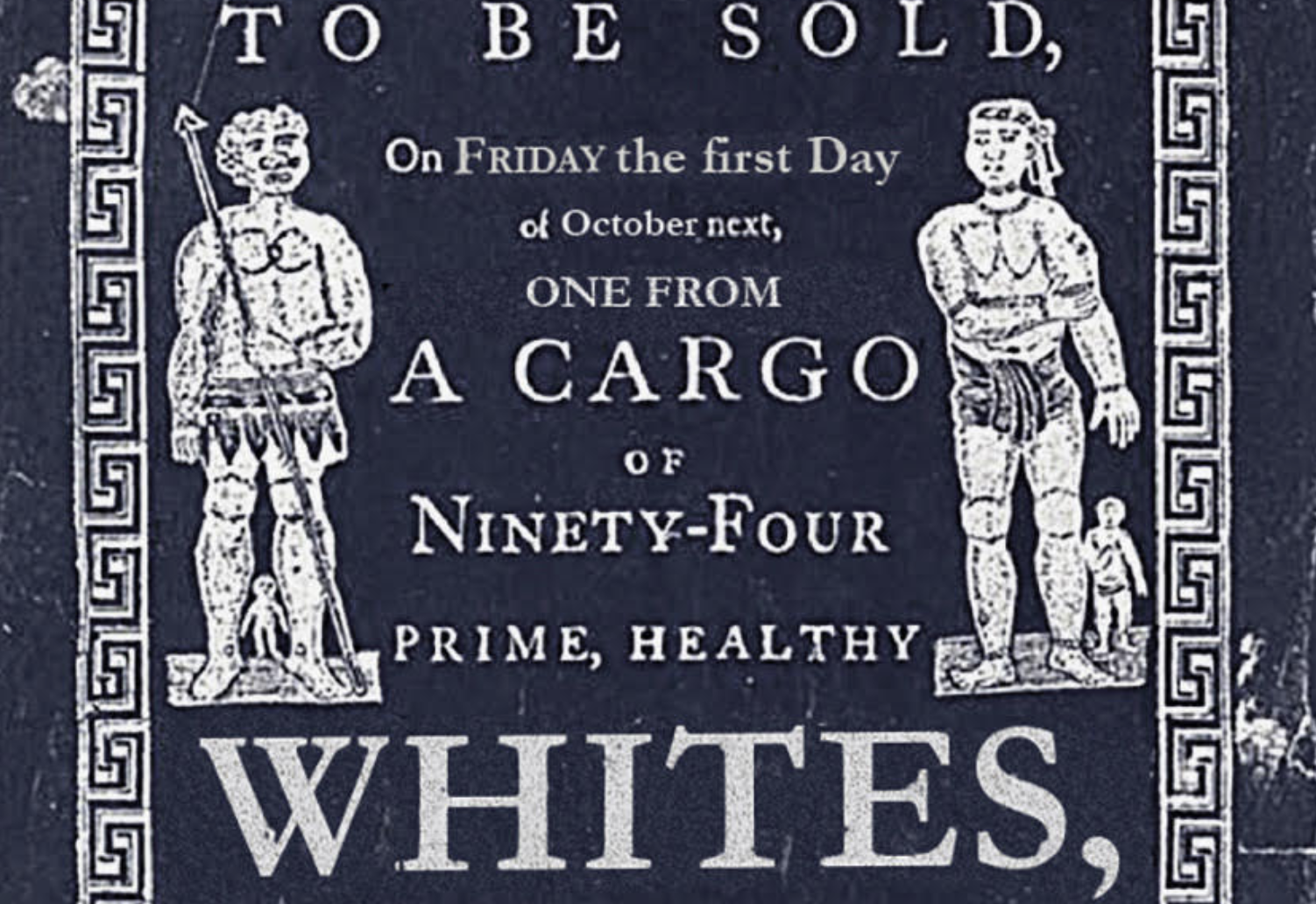“This is a really rare opportunity to buy a white male for sale,” said the artist. “They don’t come up very often.”
Taylor Dafoe
ArtNet
September 14, 2021

This spring, the phrase “non-fungible token” (NFT) exploded into the popular lexicon seemingly overnight, leaving many of us scrambling to wrap our heads around the concept. But artist Dread Scott was thinking about something else. To him, the word “fungible” had an eerie ring to it.
The term, he recalled, was used in 1980s-era scholarship about the slave trade in Portugal and Spain. Between the 16th and 18th centuries, those countries employed a system whereby slaves—called “pieces of India”—were measured in relation to an ideal slave. If a 25-year-old male was a top-tier piece, a 40-year-old woman was a third-tier, perhaps.
In other words, slavers attempted to make people fungible.
Now Scott is attempting to do something parallel with his first NFT: a looping video of a generic white man atop an auction block in modern-day Brooklyn. In the 70-second-long work, several Black people pass the man—who, not for nothing, looks a lot like Jim from The Office—but no one acknowledges his existence. (See the full video here.) https://platform.twitter.com/embed/Tweet.html?creatorScreenName=tddafoe&dnt=true&embedId=twitter-widget-0&features=eyJ0ZndfZXhwZXJpbWVudHNfY29va2llX2V4cGlyYXRpb24iOnsiYnVja2V0IjoxMjA5NjAwLCJ2ZXJzaW9uIjpudWxsfSwidGZ3X2hvcml6b25fdHdlZXRfZW1iZWRfOTU1NSI6eyJidWNrZXQiOiJodGUiLCJ2ZXJzaW9uIjpudWxsfSwidGZ3X3NwYWNlX2NhcmQiOnsiYnVja2V0Ijoib2ZmIiwidmVyc2lvbiI6bnVsbH19&frame=false&hideCard=false&hideThread=false&id=1437878913850560512&lang=en&origin=https%3A%2F%2Fnews.artnet.com%2Fmarket%2Fdread-scott-christies-nft-white-man-2008959&sessionId=8a4195a9069f9a7ceef1f2bfcde8087ed7c3cc4e&theme=light&widgetsVersion=1890d59c%3A1627936082797&width=500px
Titled White Male for Sale, the artwork is technically a standard NFT, but also something more—a discomfiting performance piece that implicates the very platform hosting the work. That would be Christie’s, where Scott’s work will be auctioned off in a special sale on October 1.
“This is a really rare opportunity to buy a white male for sale,” Scott said, matter-of-factly, to Artnet News. “If you have money to buy one, you should do it—they don’t come up very often.”
The artist’s gallerist, Cristin Tierney, approached the auctioneer with the idea of Scott’s piece earlier this year, explained Barrett White, Christie’s executive deputy chairman of postwar and contemporary art.
An installation view from Scott’s exhibition “We’re Going to End Slavery. Join Us!” 2021. Courtesy of the artist and Cristin Tierney Gallery, New York.
Scott explained that he has no say in the pricing for the piece (it’s being consigned by Tierney), but offered up a guideline: $2,064,000, or the average lifetime income of a white male, aged 35, if he worked to retirement age at 68. The sum is therefore roughly equivalent to the maximum labor one could extract from such a person, “if you owned him,” Scott said. (Christie’s has not publicized the estimate, saying only that it is available “on request.”)
Prior to its offering at Christie’s, White Male for Sale will be on view at Cristin Tierney, where Scott is also about to open his first solo exhibition in 20 years. “We’re Going to End Slavery. Join Us!”, as the show is titled, also features film stills and flags from the artist’s ambitious 2019 performance project Slave Rebellion Reenactment, for which he hired hundreds of Black actors to recreate the German Coast Uprising of 1811. So named for the area of modern-day Louisiana where it occurred, the uprising is today considered to be the largest rebellion of enslaved people in American history.
“We’re Going to End Slavery. Join Us!” is on view at New York’s Cristin Tierney Gallery, 219 Bowery, 2nd floor, September 17–December 18, 2021.






